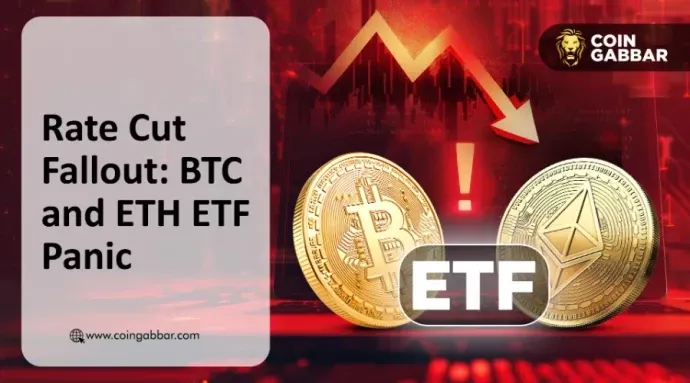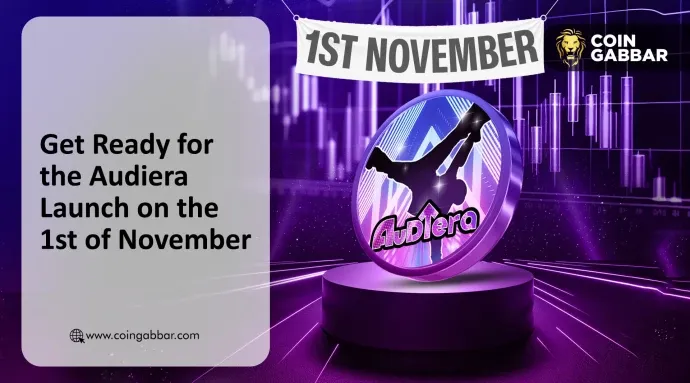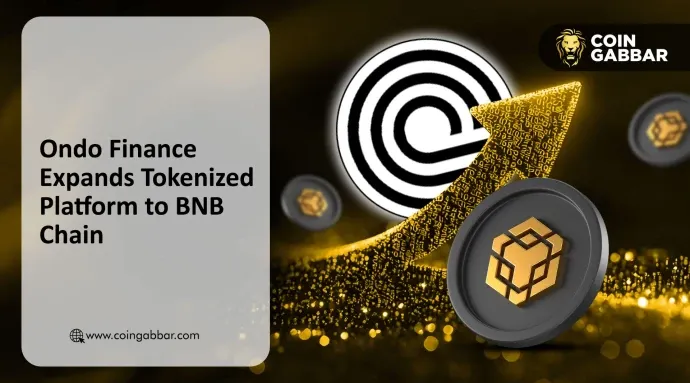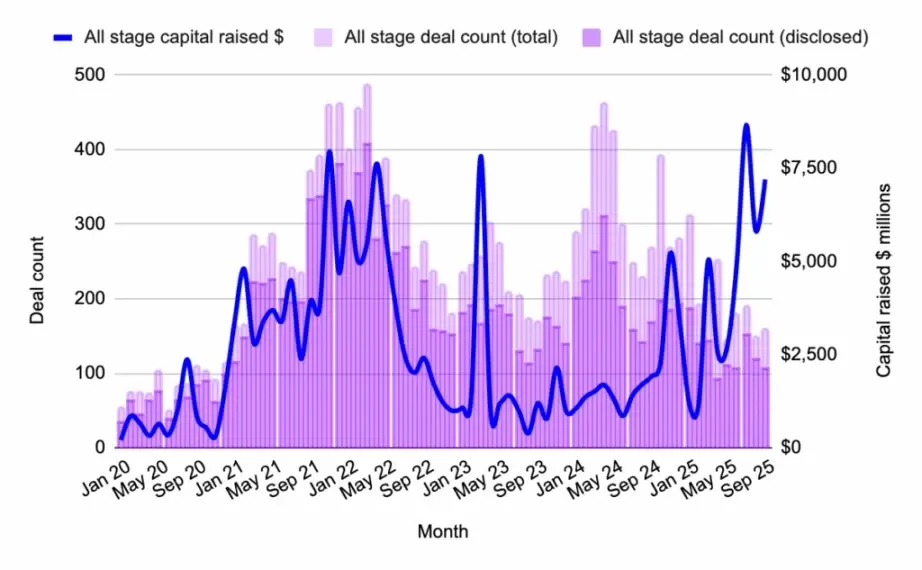The proposal of the x402 protocol is not only a technological innovation but also a structural reshaping of the internet payment system.
Abstract
The x402 protocol was jointly launched by Coinbase and Cloudflare in 2025, aiming to activate the long-dormant HTTP 402 status code to build a native payment layer for the internet. The protocol relies on blockchain and stablecoins to achieve low-cost, second-level settlement and a chain-agnostic architecture, particularly suited for the high-frequency, automated micropayment scenarios required by the AI agent economy. Compared to traditional payments, x402 has unique advantages such as "payment equals settlement," "HTTP native," and "minimal access," and has quickly formed a cross-border ecosystem with the support of partners like Visa, Google, and Anthropic. The active participation of the open-source community further promotes its expansion. Its potential lies in driving the internet business model from "advertising and subscriptions" to "instant value exchange," providing infrastructure for the AI machine economy. Risks mainly focus on technical scalability, regulatory uncertainty, user habit migration, and competitive substitution. Overall, x402 not only fills the gap in internet payments but also serves as an important starting point for the reconstruction of future business models. If it can overcome adoption and regulatory challenges, it is expected to become a new generation of global payment standards.
I. Project Background and Overview
Since the rise of the internet in the 1990s, the HTTP protocol has been the cornerstone of information transmission. It defines how browsers and servers communicate and has shaped internet usage habits. However, within the HTTP/1.1 standard, there is a long-neglected status code—402 "Payment Required." This was supposed to become the entry point for native internet payments, yet it has never been widely activated in nearly thirty years. The reason behind this is not the absence of demand, but rather the early lack of technological and ecological conditions: solutions like credit cards and PayPal, while promoting the popularity of electronic payments, relied on additional account systems, complex integration processes, and high cost structures, making it difficult to truly integrate into the semantics of HTTP. The result of this flaw is that the internet business model has moved towards a "free + advertising" dominated path. Users have become accustomed to "zero direct payment," while businesses rely on advertising monetization or subscription models to maintain operations. Although this model has played a significant role in driving rapid internet growth, its negative effects are increasingly evident: user privacy is excessively collected and utilized, content creators face unreasonable income structures, and advertising oligopolies monopolize traffic entry. It can be said that the lack of a native payment layer on the internet has directly shaped the business ecology of the Web2 era.
In September 2025, Coinbase and Cloudflare jointly proposed the x402 protocol, aiming to truly activate the 402 status code and create a native payment layer for the internet. Its concept is not simply to "charge for HTTP," but to utilize Web3 technologies such as blockchain, stablecoins, and smart contracts to solve the core obstacles that made early payments difficult to embed in the internet. Coinbase provides the infrastructure for crypto payments and the stablecoin ecosystem, while Cloudflare leverages its global CDN and edge computing capabilities to embed the protocol into the existing network stack, requiring almost no large-scale modifications to the internet architecture. The core value of the x402 protocol can be summarized in three points: payment equals settlement: using blockchain and stablecoins, transactions are confirmed within seconds without the need for intermediary clearing. HTTP native: designed based on standard status codes, compatible with existing internet protocols, and naturally embedded in the web environment. Minimal access: only "one line of code" is needed to enable payment functionality for websites or APIs, significantly lowering integration barriers. Essentially, x402 is not a replacement for payment systems like Visa or PayPal, but rather fills the long-missing "value transfer module" at the internet protocol layer. Just as SMTP is to email and DNS is to domain resolution, x402 aims to become the "payment protocol standard" of the information world. To understand the necessity of x402, one must return to the basic limitations of current payment systems: high fees: credit cards and third-party payment institutions typically charge 2-3% fees, which can even exceed the transaction amount in micropayment scenarios. Settlement delays: fund transfers generally require T+1 or even longer cycles, putting significant cash flow pressure on merchants. Cross-border barriers: fragmented exchange rates, compliance, and regulatory systems make cross-border micropayments nearly impossible. Insufficient programmability: traditional payment systems are not designed for automation, making it difficult to support condition-triggered or machine-to-machine payments without human intervention. These pain points were tolerable in the Web2 era, as the main business models relied on advertising and subscriptions. However, in the AI economy era, micropayments and automated payments will become core demands, and traditional systems are increasingly inadequate.
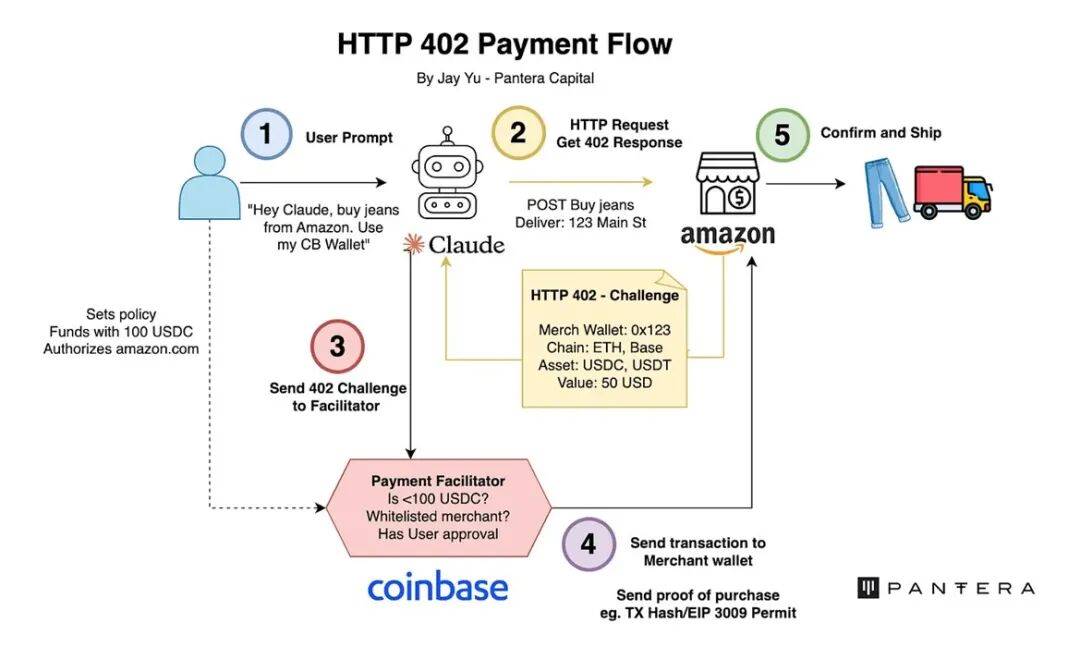
The launch of x402 is closely related to the rise of AI agents. AI agents can autonomously complete tasks, invoke services, and make payment decisions, gradually becoming important economic entities on the internet. Gartner predicts that by 2030, machine customers will influence over $30 trillion in global transactions. Research from the World Economic Forum also indicates that the market size for AI agents will grow from $7.84 billion in 2025 to $50.3 billion in 2030, with a compound annual growth rate of 45%. The operational logic of AI agents dictates that payment systems must meet the following conditions: high-frequency small amounts: each API call or data read may only involve transactions in the range of $0.001 to $0.01. Fully automated: payment processes require no human intervention and must be completely programmable. 7×24 operation: machine transactions are continuous, requiring extremely high system stability. Cross-border universality: AI agents are not limited by geography and require a globally unified value settlement layer. Traditional payment networks are almost completely ineffective in these areas, while x402 is designed around these new demands. It can be said that the AI economy is the true historical mission of the 402 protocol. In recent years, the maturity of several key technologies has collectively created the conditions for the realization of 402: stablecoins: USDC, USDT, etc., provide stable value anchors for micropayments, eliminating concerns about cryptocurrency volatility. Layer 2 scaling: networks like Base and Polygon significantly reduce gas fees, making $0.001 level payments possible. Account abstraction and smart contract wallets: bring the blockchain payment experience closer to Web2 levels, supporting permission management, multi-signature, and limits. The proliferation of edge computing: companies like Cloudflare can accelerate verification and payment confirmation globally, reducing latency. The combination of these conditions has finally brought the "30-year dormant 402" to the best window for activation. Under the x402 system, payments and HTTP requests combine to form a standardized closed loop: the client accesses resources → the server returns a 402 status code, along with payment amount, receiving address, and currency requirements. The client wallet automatically generates a payment transaction and submits it to the blockchain. Payment confirmation → the client re-requests resources and includes payment proof. The server verifies the payment → returns the original content. This "payment equals access" experience makes micropayments as natural as browsing the web, with users hardly feeling the complexity. The greatest strategic significance of the x402 protocol lies in the fact that it is not a closed solution from a single company, but an open standard. Coinbase and Cloudflare chose to open-source it and promote the establishment of a foundation for governance, avoiding control by a single company. This means: any service provider can integrate without barriers. The protocol layer is independent of specific business models and does not directly compete with ecological applications. It forms a complementary rather than substitutive relationship with giants like Visa, Google, and Anthropic. This positioning enhances the acceptability of x402, making it more like internet infrastructure rather than a patented product of a single company.
Looking back at the development of the internet over the past thirty years, payment has always been a missing link. The 402 status code is like a "unlit puzzle piece," abandoned due to technological limitations and locked in commercial paths. Now, with the rise of blockchain, stablecoins, and AI agents, this puzzle piece finally has the opportunity to be filled. The launch of the x402 protocol is not just a technological upgrade but may also represent a profound reconstruction of the internet business paradigm:
From advertising-driven → value-driven; From account systems → protocol native; From person-to-person payments → machine-to-machine payments. All of this is precisely the core that the "Project Background and Overview" section aims to reveal: x402 is not simply a payment tool, but a puzzle piece that has been delayed for thirty years in the historical process of the internet, finally welcoming the opportunity for realization in 2025.
II. Ecological Development and Market Outlook
The proposal of the x402 protocol is not merely the release of a set of technical specifications but a recombination involving multiple ecosystems. After the protocol was released, both Coinbase and Cloudflare emphasized that x402 is not a proprietary protocol of a single company but a standard for "internet-native payment layers." This openness defined it from the outset as the core of an ecosystem rather than an isolated existence of a single product. The ecological construction around x402 is primarily focused on infrastructure, platform applications, partner integration, developer communities, and market education, demonstrating a bottom-up network effect growth model. In other words, the market prospects and ecological expansion of x402 are not breakthroughs at a single point but are driven by the combined efforts of multiple links.
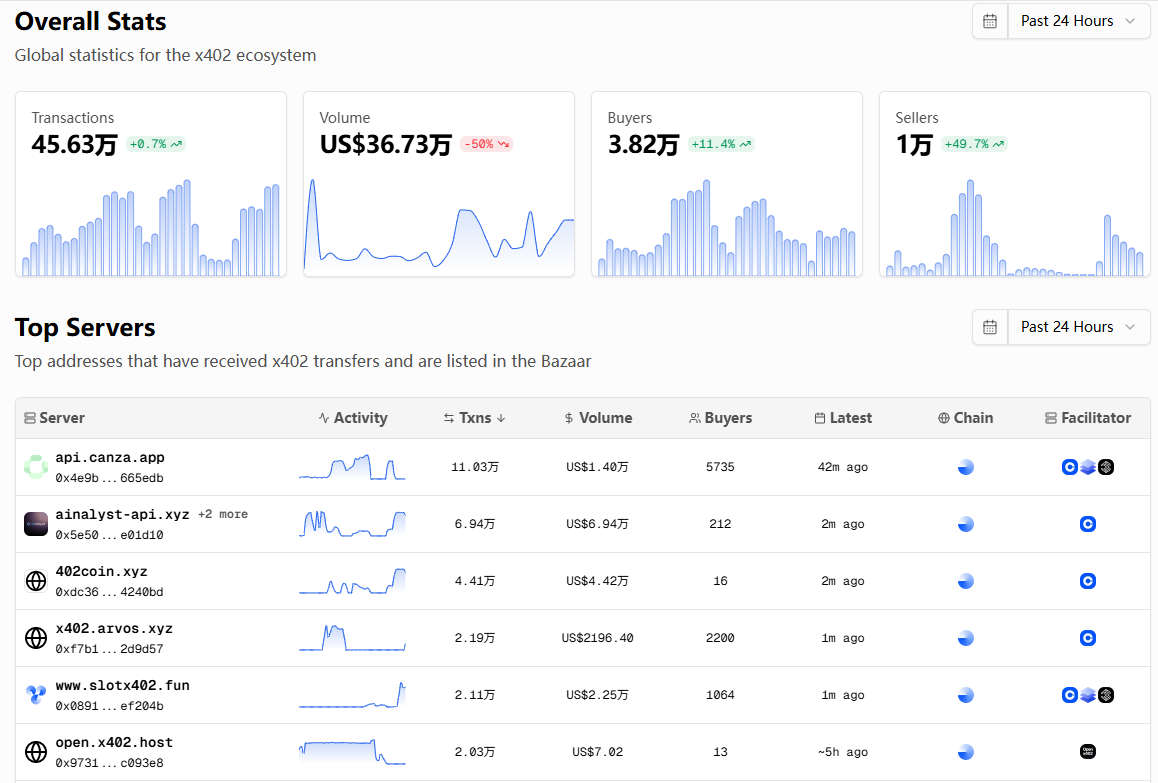
At the infrastructure level, the x402 protocol chose the most simplified entry point: through deep compatibility with the 402 status code and HTTP, developers only need "one line of code" to empower payment functionality for websites or APIs. This minimal access logic not only lowers the barriers for small and medium developers but also allows large platforms to explore without incurring huge migration costs. The middleware, client libraries, and multi-chain adapters provided by Coinbase and Cloudflare further reduce development and maintenance costs. Particularly, the existence of multi-chain adapters allows service providers to choose the optimal blockchain execution environment based on actual scenarios, such as using Polygon for low-cost high-concurrency needs, Ethereum mainnet for high-security scenarios, or implementing deep integration with the exchange system on Coinbase's own Base chain. This flexibility significantly enhances the universality of the protocol, thereby increasing its potential to become a de facto standard. At the platform level, Coinbase's x402 Bazaar is one of the earliest applications with an ecological prototype. This market platform, aimed at AI agents and developers, allows service providers to list their APIs, data sources, or functional modules, enabling users or AI agents to call them on demand and make instant payments through the x402 protocol. Its value lies in solving the long-standing billing and integration challenges in the API economy. Previously, API monetization often required complex registration, subscription, and monthly settlement processes, whereas in the x402 Bazaar environment, calling equals payment, and payment equals settlement, making per-call billing a reality. For AI agents, this means they can autonomously and flexibly invoke various services in the market without relying on human manual authorization or binding credit cards. This market mechanism aligns closely with the autonomy of AI agents and presents a highly promising growth point for Coinbase and Cloudflare. If x402 Bazaar can accumulate sufficient supply and demand, it is likely to evolve into the "App Store of the AI agent economy."
Cloudflare's participation brings another layer of explosive potential to the protocol. As one of the largest CDN and cybersecurity service providers globally, Cloudflare controls over 20% of internet traffic entry points, and its Workers edge computing platform has become a tool for millions of developers to deploy lightweight services. Integrating x402 payment functionality into Cloudflare Workers means that countless small and medium websites, APIs, and services can quickly access payment capabilities with zero transformation costs. This "zero friction deployment" allows the protocol to rapidly spread to the long-tail developer community, where long-tail applications are the most vibrant scenarios for micropayment models. Whether it's unlocking articles on independent blogs or single-use calls for niche tools, the distribution capabilities of Cloudflare enable these to gain payment capabilities. This strategy stands in stark contrast to traditional payment gateways, which typically target medium to large enterprises and require complex integrations, while x402 takes the opposite approach, breaking through from the long tail and developer community before gradually feeding back into the mainstream business system. More importantly, x402 does not limit itself to a crypto-native ecosystem but actively seeks interoperability with traditional payment systems. Visa's involvement provides a crucial bridge for the entire ecosystem. By integrating with Visa's TAP protocol, x402 can achieve compatibility between stablecoin payments and traditional credit card networks. This bridging design is strategically significant as it avoids direct competition with traditional payment networks and offers users and businesses a dual-track option: payments can still be made using credit cards in familiar scenarios, while in new scenarios such as machine-to-machine and cross-border micropayments, transactions can be completed through the x402 protocol with stablecoins. This gradual transition reduces the difficulty of market education, allowing traditional businesses and consumers to accept the new protocol with lower psychological and technical costs. In other words, Visa's participation allows x402 to not only be an experiment in Web3 but also to have a pathway into the mainstream financial system.
In the partner matrix, the involvement of tech giants like Google, AWS, and Anthropic is also noteworthy. Google's proposed AP2 (Agent Payments Protocol) was originally designed as a unified payment framework for AI agents, supporting various traditional payment methods. Its combination with x402 adds dimensions of stablecoin and on-chain payments. In Google's demonstration case, users only need to issue a prompt, and the AI agent can complete a series of actions, including research, inventory confirmation, payment, and settlement, with the support of AP2 and x402. This experience showcases a typical "end-to-end automated transaction" process in the era of AI agents, with x402 serving as the underlying payment layer. Anthropic's involvement further proves the urgent need for such a payment standard among AI companies. AI assistants like Claude will need to interact with numerous third-party services in the future, and automated payments are an indispensable part of that. Ecological construction relies not only on the push from large enterprises but also on the crucial role of the open-source community. The x402 protocol chose the open-source path from the beginning, adopting the Apache-2.0 license and publishing the code on GitHub. Within just a few months, the protocol has garnered over 1,600 stars, with developers contributing SDKs in various languages, visualization configuration tools, and example applications. These community tools further lower the access threshold for ordinary developers, promoting the self-expansion of the ecosystem. Engineers from Coinbase and Cloudflare actively participate in community discussions, respond to feedback, and regularly release improved versions. This open model is highly reminiscent of the early IETF standard-setting process on the internet, indicating that x402 may be on the path to true standardization.
From a market size perspective, x402 sits at the intersection of two high-growth markets: global digital payments and the AI agent economy. The global digital payment market is expected to exceed $10 trillion by 2025, while the AI agent market is projected to reach $50 billion by 2030, with an average annual growth rate exceeding 40%. This means that x402 not only has the potential to penetrate the existing massive payment market but can also play an infrastructural role in the emerging machine economy. The API economy and micropayments for digital content are the most direct landing scenarios. According to forecasts, the global API management market will reach $6.18 billion by 2027, while content payments are set to experience a new round of growth against the backdrop of limitations on advertising models. Traditional subscription models somewhat restrict user experience, as users may only want to pay for a single article, a single piece of music, or a single tool call. The micropayment capabilities of the x402 protocol make this "deconstructing subscriptions" model possible, thereby promoting the emergence of more diverse business models. In terms of competitive landscape, the x402 protocol is not without competitors. Micropayment solutions within the Bitcoin ecosystem, such as the Lightning Network, have long existed, and some decentralized applications also offer token-driven payment mechanisms. However, their limitations lie in their failure to integrate into the internet protocol layer, facing inherent barriers to integration with HTTP, browsers, and APIs. While traditional payment networks are solid, they lack advantages in micropayments, low cross-border fees, and automation levels. x402 establishes a differentiated positioning with its HTTP native, minimal access, and cross-chain compatibility features. It does not directly compete with any single payment system but provides a shared "interface" for all parties through protocol standardization. This positioning makes it easier to gain support from multiple parties, thereby forming a broad alliance ecosystem.
Overall, the ecological development of the x402 protocol has already shown early vitality: from Coinbase Bazaar to Cloudflare Workers, and from the collaboration with Visa TAP and Google AP2 to the active open-source community and the improvement of developer tools, from micropayment scenarios in long-tail applications to the autonomous trading needs of AI agents, all of these together outline a vast potential market space. Although the market outlook still carries uncertainties, especially regarding regulation and large-scale adoption challenges, the overall direction is quite clear: x402 is becoming a key interface for the integration of the AI economy and internet payments. If the first part emphasized the historical background and technical inevitability of the birth of the 402 protocol, then this part on ecological development and market outlook reveals the chain reactions and reshaping of the business landscape it may trigger. The future of the protocol depends not only on technological maturity but also on whether the ecosystem can form positive feedback; once network effects are established, its diffusion speed will far exceed the paths of traditional payment innovations.
III. Investment Potential and Risks
If the x402 protocol has already demonstrated sufficient prospects and landing logic at the technical and ecological levels, then for investors, the most critical perspective remains how to assess its potential value and risks. This involves not only its network effect potential as a protocol standard but also the commercial value that can be released by applications, platforms, and services built around the protocol, while also facing the challenges that may arise in the coming years across multiple dimensions such as technology, regulation, and market acceptance. In other words, investors need to establish reasonable expectations between macro narratives and micro indicators to grasp the strategic opportunities inherent in the x402 protocol.
First, from the perspective of potential, the greatest value of x402 lies in its "protocol layer network effects." Throughout the history of the internet, every successful underlying protocol often becomes a long-term infrastructure with cross-cycle investment value. For example, TCP/IP laid the communication framework for the entire internet, SSL/TLS became the de facto standard for secure network communication, and SMTP promoted the popularity of email. Once established, they are extremely difficult to replace and can provide long-term dividends to the industries that depend on them. If the x402 protocol can become the standard of "payment equals HTTP," its value does not lie in the profitability of a single application but in the reconstruction of the entire internet business model. Once widely adopted, the x402 protocol could provide payment capabilities to millions of websites, billions of devices, and countless AI agents, with network effects continuously strengthening, ultimately forming a path dependency for a de facto standard. Once this standard dividend appears, its value is difficult to measure with traditional valuation methods, as it involves the foundational reconstruction of the entire industry ecosystem. Secondly, from the perspective of ecological investment, multiple layers of business opportunities may arise around the x402 protocol. The most fundamental are infrastructure services related to the protocol, such as payment gateways, verification services, multi-chain adapters, and exchange rate services, which belong to the "protocol tool layer," similar to routers, firewalls, and load balancers that emerged around TCP/IP. This layer is usually the first to commercialize, as they provide the necessary support for the protocol's operation, which users and developers cannot bypass. A higher layer includes platform applications, such as Coinbase's x402 Bazaar and Cloudflare's Workers integration, which may become the earliest scenarios to achieve scaled revenue. Further up are new business models derived from the protocol, such as AI agents calling third-party services on demand, content creators benefiting directly from micropayments, and machine payments between IoT devices; once these models are validated by the market, they may form long-term stable cash flows. Investors should pay attention to these different layers of ecological opportunities, betting on the robust growth of underlying infrastructure while also capturing high-elasticity returns at the application layer.
However, all potential must be weighed against risks. The primary risk facing the x402 protocol is technical scalability. In theory, Layer 2 and state channels of blockchain can achieve low-cost high concurrency, but in practice, when AI agents truly emerge on a large scale, the payment system may need to handle hundreds of thousands or even millions of micropayments per second. This pressure may exceed the capacity of existing public chains and Layer 2, leading to transaction congestion, rising fees, and declining user experience. If scalability issues cannot be resolved, the micropayment advantages of x402 will be weakened, and it may even be surpassed by alternative solutions. Therefore, investors need to continuously track the protocol's performance in real-world environments, including key indicators such as average confirmation time, failure rate, fee curves, and multi-chain load distribution. The second risk dimension is regulatory uncertainty. Although stablecoins have gradually been accepted by the mainstream financial system, their compliance status varies greatly across different countries. In the United States, stablecoins are under strict scrutiny from Congress and regulatory agencies, involving multiple requirements such as anti-money laundering (AML), know your customer (KYC), and payment licensing; in Europe, frameworks like MiCA provide certain compliance pathways, but operational details are still evolving; in emerging markets, stablecoin payments may even be seen as a threat to monetary sovereignty and face restrictions. The "no account, direct payment" model designed by the x402 protocol, while providing an excellent user experience, may conflict with the identity verification and anti-money laundering requirements emphasized by regulatory authorities. If major market regulations tighten, the speed of the protocol's adoption may be severely impacted. Therefore, the uncertainty of regulatory policies will be a core external risk affecting its commercialization process. The uncertainty of market acceptance is also not to be overlooked. Although logically, the demand for micropayments and AI agent payments is clear, user and enterprise habits often exhibit path dependency. Most internet users have become accustomed to subscription and advertising-subsidized models, and whether they are willing to shift to a "pay-per-use" model still requires market education.
In addition, security risks are also a factor that must be considered. As a payment protocol, any vulnerabilities in x402 could lead to large-scale financial losses or a systemic trust crisis. Although mechanisms such as tamper resistance, replay attack prevention, and minimal information leakage have been introduced in the protocol design, challenges such as hacking, smart contract vulnerabilities, and wallet security issues still need to be addressed. Historical experience shows that any protocol involving the flow of funds must undergo long-term security validation and iteration to gradually gain market trust. Investors should pay attention to whether there have been significant security incidents during the protocol's actual operation, as well as the foundation and development team's investment and performance in security audits and emergency responses.
On the competitive front, while the x402 protocol has unique advantages in being HTTP native and cross-chain compatible, it is not without alternative threats. Solutions for micropayments on the Lightning Network, Rollups, and proprietary payment systems from large internet companies (such as Apple Pay and Google Pay) could potentially provide alternative solutions in certain scenarios. It is particularly noteworthy that if traditional payment networks rapidly iterate and launch low-fee, programmable micropayment tools, quickly popularizing them through their existing large user bases, the differentiated advantages of x402 may be somewhat diminished. Therefore, investors need to dynamically observe the actions of competitors and assess the sustainability of x402's differentiation. Despite the numerous risks, the investment value of the x402 protocol lies in the "paradigm shift dividend" it represents. Just as cloud computing, despite facing security and compliance doubts in its early days, ultimately became an inevitable choice for IT infrastructure, the demand for an internet-native payment layer is almost irreversible. If x402 can establish standards first and gain multi-party endorsement through open-source and foundation models, its long-term value will not lie in short-term profits but in its strategic position as the "underlying standard of the digital economy." For venture capital firms, this means that early investments in related ecological enterprises may yield excess returns; for traditional financial institutions, participating in standard-setting and ecosystem building can ensure a proactive position in the AI agent economy; for industrial capital, building application scenarios around x402 may bring new growth curves.
In practice, investors should focus on several core indicators to assess the protocol's progress: first, adoption rates, including GitHub developer activity, SDK download volumes, Cloudflare Workers integration amounts, and the number of websites and APIs accessed; second, transaction metrics, including daily transaction counts, average transaction values, confirmation times, and failure rates; third, ecological metrics, including active supply and demand in Bazaar, and the integration status of mainstream AI platforms and content platforms; fourth, compliance metrics, including the legal status of stablecoins, KYC/AML compliance schemes in major jurisdictions, and communication between the foundation and regulatory bodies. These indicators collectively form key signals for whether the protocol can cross the "early experimentation—mainstream adoption" chasm. Overall, the investment potential of the x402 protocol is reflected in its promise to become the de facto standard for internet payments, empowering the AI agent economy and micropayment models, and driving the reconstruction of internet business models. However, it also faces multiple risks, including technical, regulatory, market acceptance, and competition. For investors, the key lies in correctly understanding the relationship between its long-term logic and short-term fluctuations, recognizing the potential standardization dividends while being prepared to face the challenges brought by uncertainty. Only those investors who can participate early, continuously track developments, and flexibly adjust their strategies will be able to capture the maximum value from this potential payment revolution.
IV. Conclusion
The introduction of the x402 protocol is not only a technological innovation but also a structural reshaping of the internet payment system. By reactivating the dormant HTTP 402 status code that has been asleep for thirty years, it embeds payments into the foundational protocol layer of the internet, thereby opening up pathways for value transfer beyond information transmission. Leveraging blockchain, stablecoins, and Layer 2 scaling solutions, x402 achieves characteristics of "payment equals settlement," "minimal access," and "chain agnostic," providing the urgently needed underlying capabilities for the AI agent economy and micropayment scenarios. The joint push from Coinbase and Cloudflare, along with the participation of giants like Visa, Google, and Anthropic, gives this protocol cross-border integration and standardization potential right from its launch, while the active response from the open-source community injects vitality into long-tail innovation. However, risks cannot be overlooked. Technical scalability still needs to be validated in real-world environments, regulatory uncertainty may slow global adoption, and the payment habits of users and businesses will require time to shift, while competitors may also form alternatives in certain scenarios. In other words, for x402 to truly go mainstream, it must cross three stages: "feasibility validation—large-scale adoption—de facto standardization," and this process will be influenced by technological iteration, policy evolution, and market education.
From an investment perspective, the value of the x402 protocol lies not in short-term revenue curves but in the paradigm shift it may trigger: the internet business model is expected to transition from "advertising subsidies and subscription lock-in" to "micropayments and instant value exchange," with autonomous payments by AI agents driving the rise of the machine economy, and the global payment system potentially welcoming a new unified interface. For enterprises, early piloting and integration mean gaining an advantage in the future ecosystem; for investors, the multi-layered opportunities surrounding the protocol and its ecosystem are worthy of high attention. Therefore, it can be said that the x402 protocol is a key node in the development process of the internet; it is both a product of technological maturity, demand catalysis, and ecological synergy, as well as a starting point for a leapfrog transformation. In the coming years, whether it can truly become the standard for the "internet-native payment layer" will determine whether it is a fleeting innovative experiment or the infrastructure for a new round of global business landscape reconstruction. Regardless of the final outcome, x402 has already illuminated that long-missing piece in the history of the internet, opening up new imaginative spaces for the future of value transfer.
免责声明:本文章仅代表作者个人观点,不代表本平台的立场和观点。本文章仅供信息分享,不构成对任何人的任何投资建议。用户与作者之间的任何争议,与本平台无关。如网页中刊载的文章或图片涉及侵权,请提供相关的权利证明和身份证明发送邮件到support@aicoin.com,本平台相关工作人员将会进行核查。
